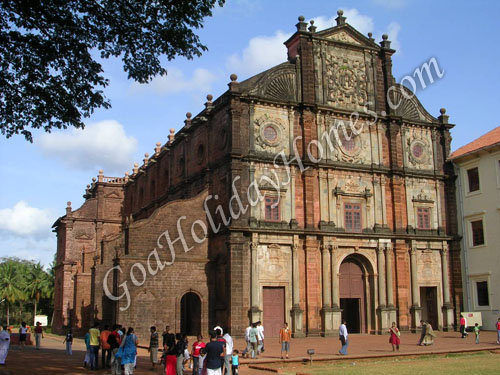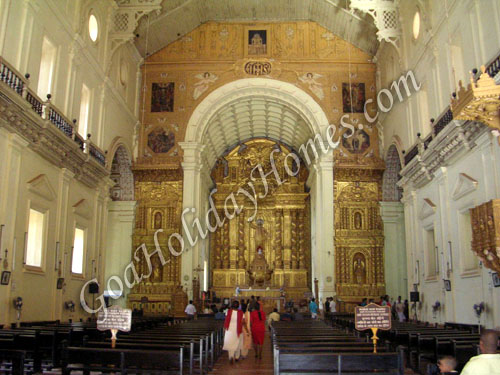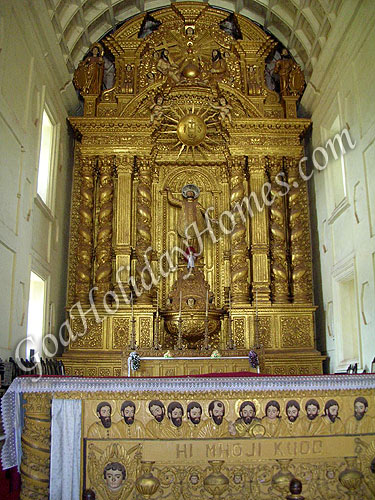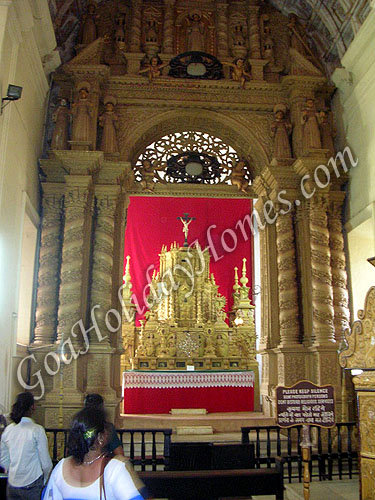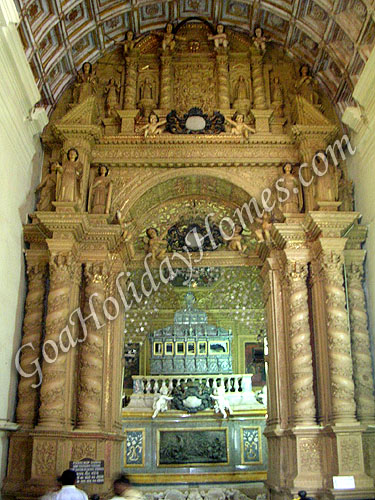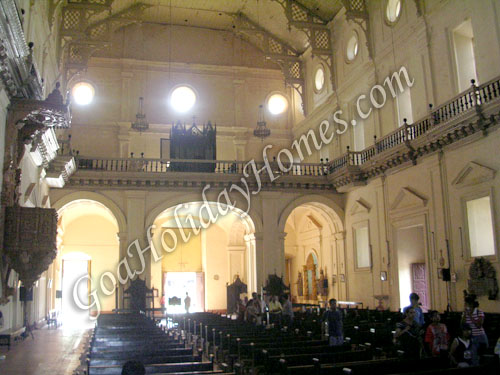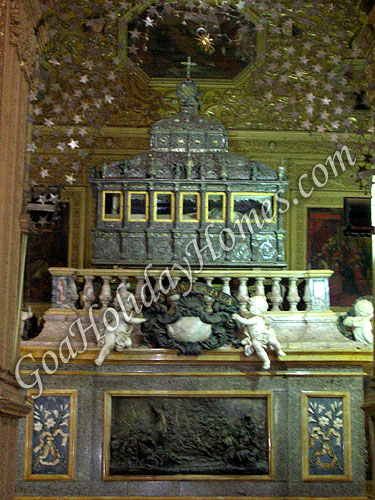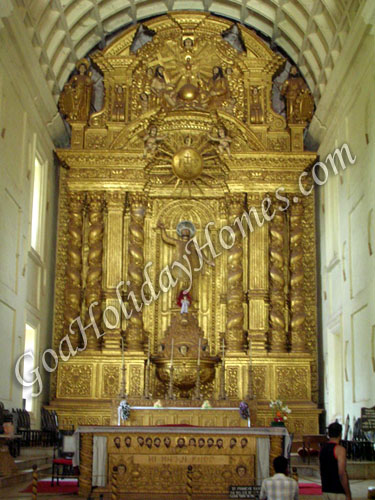Basilica of Bom Jesus
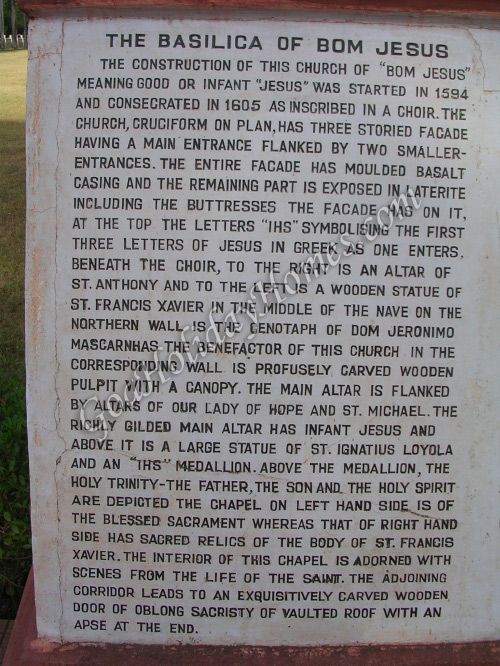
The Basilica of Bom Jesus is the most august and famous of all the churches in Old Goa. It contains the relics of St. Francis Xavier, Patron saint of Goa, Apostle of the Indies. He was known as Goencho Saib by most of the people of Goa. The construction of the church began on the 24th November 1594 AD from the funds bequeathed for this purpose by Dom Jeronimos Mascarenhas. It was blessed by the Archbishop Dom Fr Aleixo de Menezes on the15th May1605 AD. It became the first church in India to be elevated to the status of a minor basilica in 1946.
The three storey structure is combination of Doric, Corinthian and Composite style of architecture from the exterior. It is built of black laterite stone. The façade is divided into four parts. The lowest part contains three graceful entrances. The part above it has three large windows corresponding to the three entrances. The third section has three circular windows and the fourth part forms a quadrangle decorated lavishly with arabesque. All the sections are decorated with pillars and carvings on basalt brought from Bassein in north Goa. The interior of church is made of Mosaic-Corinthian style and is noteworthy for its simplicity. Three rows of windows are rising one over another from each side besides those of the choir and corresponding circular ones. The windows in the second row have a protruding balcony skillfully attached to them. The entrance is beneath the choir and is supported by columns. The body of the Basilica is spacious.
The relics of St Francis Xavier were kept in this chapel from 1623-55 AD. The Blessed Sacrament was earlier kept on the main altar under the statue of St Ignatius and now is preserved in a gold tabernacle. A cenotaph of gilded bronze to Dom Jeronimos Mascarenhas, Captain of Cochin and Ormuz and the benefactor of the church, is on the northern wall near the side wall. The church is dedicated to the Infant Jesus and is exquisitely decorated. The infant Jesus is shown under the protection of St Ignatius of Loyola, the Founder of the Society of Jesus. The statue of St Ignatius is almost 3 m high. The side have altar to Our Lady of Mercy and St Michael. The Liturgical altar was set up by assembling the old discarded altars and was inaugurated on 12th March 1965. The chapel and tomb of St Francis Xavier is to the south of the church. The body of St. Francis Xavier was brought here from the College of St Paul after his canonization in 1624 AD. It was shifted to its present location in 1655 AD. The chapel has three doors on the east, west and south. A huge picture of the saint is hung on the last door. The chapel is decorated with 27 pictures representing the life and miracles of the saint.
The mausoleum is a three-tiered bier built by the Duke of Tuscany (1670-1737 AD) in return for the pillow on which the head of St. Francis Xavier rested for many years after his death. Giovanni Batista Foggini from Florentine designed the structure and was completed in1698 AD. It arrived at Goa on 16th September 1698 from Florence, Italy and was erected between 14th October and 9th November 1698. On the top of the bier lies the Silver Casket, which contains the relics of the saint.
The casket was constructed by Gaon silversmiths under the supervision of Fr Marco Mastrilli S.J. it is also known as Mastrillian casket. The money for its construction came from the donation in Goa and elsewhere. It was completed on 2nd December 1637 on the feast of the Saint. It was crowned by a cross standing on a pedestal with the figures of two angels on both the sides, one near the head holding a heart with a halo and the other near his feat bearing the motto "Satis est, Domine, Satis est" meaning "It is enough, O Lord, it is enough!". It is believed to be the most common utterances of the saint. The plates on the sides of the casket have been removed to make the relics visible through the inner glass/ crystal urn into which the relics were placed in 1955.
The crystal urn was ordered after the exposition of D. Jose Costa Nunes, Patriarch of Goa in 1952, it was decided that the sacred relics should not be touched directly anymore. The crystal urn was made in the Casa Brandizzi at Rome and was brought to Goa on January 30th 1955. The relics were placed in the crystal urn first and then into the silver casket on February 13th 1955 and sealed. The old wooden coffin with its three keys is now kept in the museum at the Professed House of the Jesuits.
Contact Details
Get Directions:

